How to Use School Supplies: Kindergarten Activities
The first week of kindergarten is the most important time to teach students the rules, routines, and procedures of the classroom. One thing you should be sure to include in your plans for the first week of school is teaching students how to use school supplies. Keep reading for tips and ideas for how you can help students learn how to use their school tools safely and efficiently!
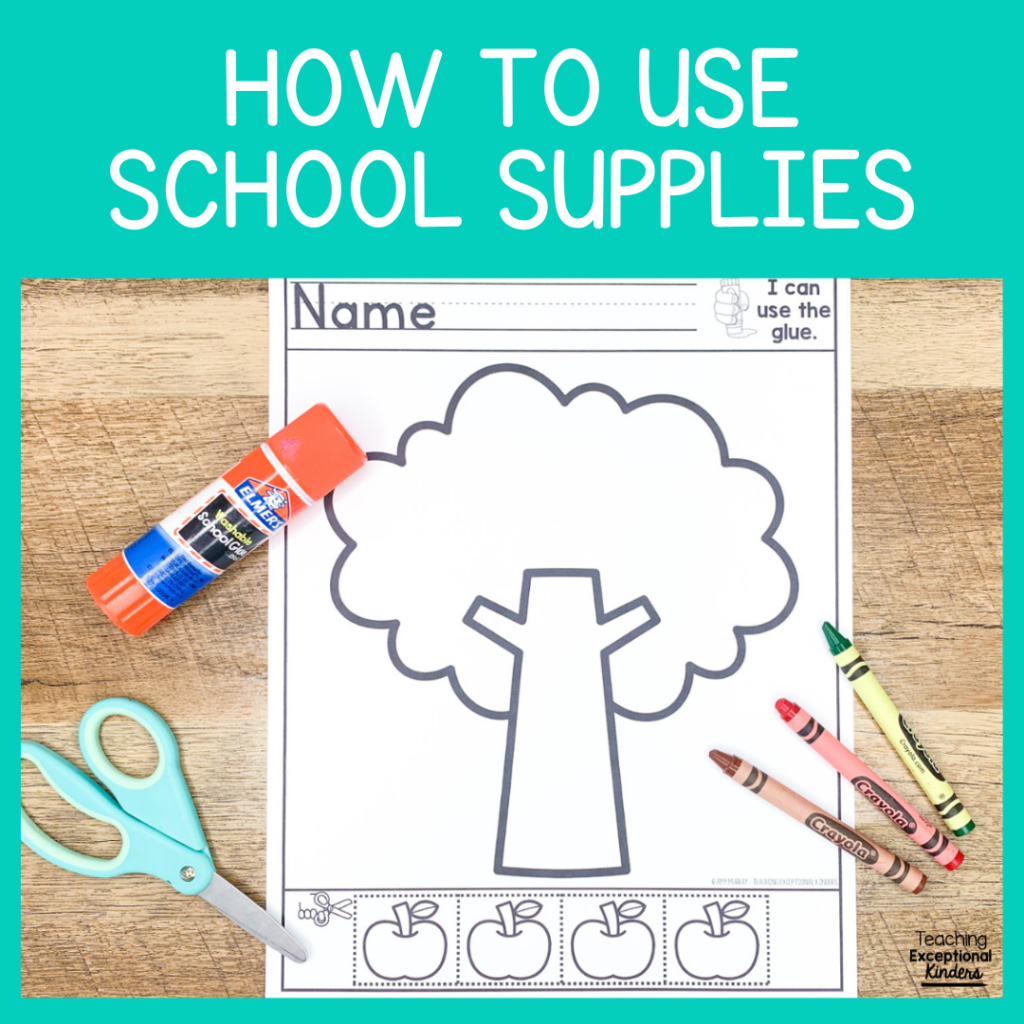
Where to Start
This post is all about teaching kids how to use school supplies. You may want to start here at this post with 9 helpful tips for the first week of kindergarten.
Before teaching students how to use school supplies, prioritize the most important things you want them to know about each one. Since kindergartners are learning so many rules and procedures at the beginning of the year, you’ll want to keep it simple. I suggest focusing on elements of safety, use, and care.
Safety – First and foremost, what do students need to know in order to use the school supply safely? The mind might go straight to scissors when it comes to school tools that need safety rules. However, five and six-year-olds really need explicit safety reminders for all school supplies.
Use – Some students come to kindergarten having never held a pencil or colored with a crayon. They need plenty of instruction and modeling on how to use each school tool.
Care – Show students how to take care of the supplies while using them and when they’re finished.
Once you've identified what you want to prioritize, you can discuss these as a class before using each school tool for the first time.
Where to Keep Kindergarten School Supplies
Deciding where to keep school supplies should be part of your back-to-school procedures plan. In my classroom, we used individual pencil boxes (We called tool kits.). Inside their tool kits, students kept a pencil, crayons, and glue sticks. To start, students had empty tool kits. In the first week of kindergarten, each time we introduced and practiced with a new tool, it was added to their tool kit.
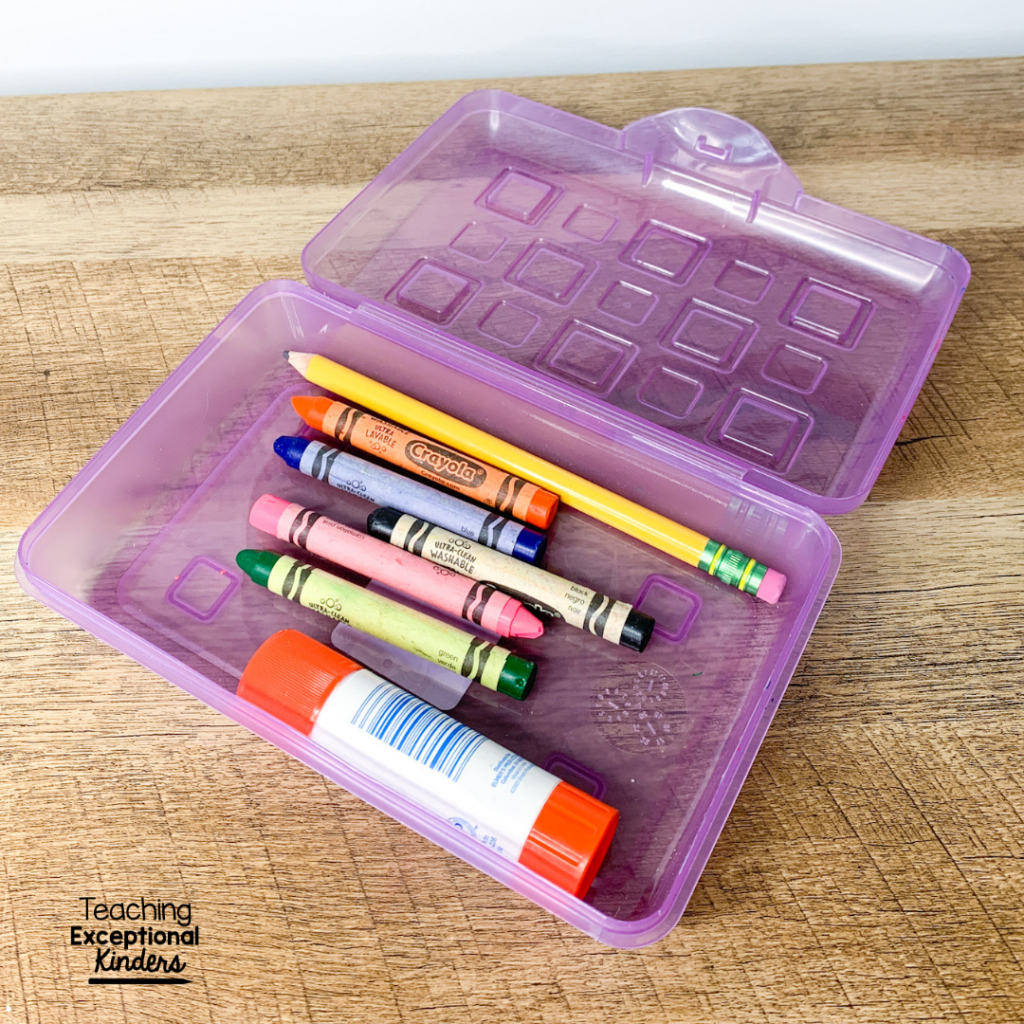
I preferred to use Sterilite pencil boxes like these (you can also get them at Walmart during back-to-school season). We used the large sized Crayola crayons like these and washable Crayola Markers. Elmer's glue sticks are the way to go and these scissors were my favorite because I could color code them by tables.
Ideas for Teaching How to Use School Supplies
When it comes to using school supplies, children learn best by doing! Once you’ve discussed the most important elements of safety, use, and care, it’s time to practice. Here is a sequence of activities that you could use for the first week of school.
Pencil and Crayons, Part One
Since pencils and crayons are the most used school supplies in the kindergarten classroom, it’s important to practice these first.
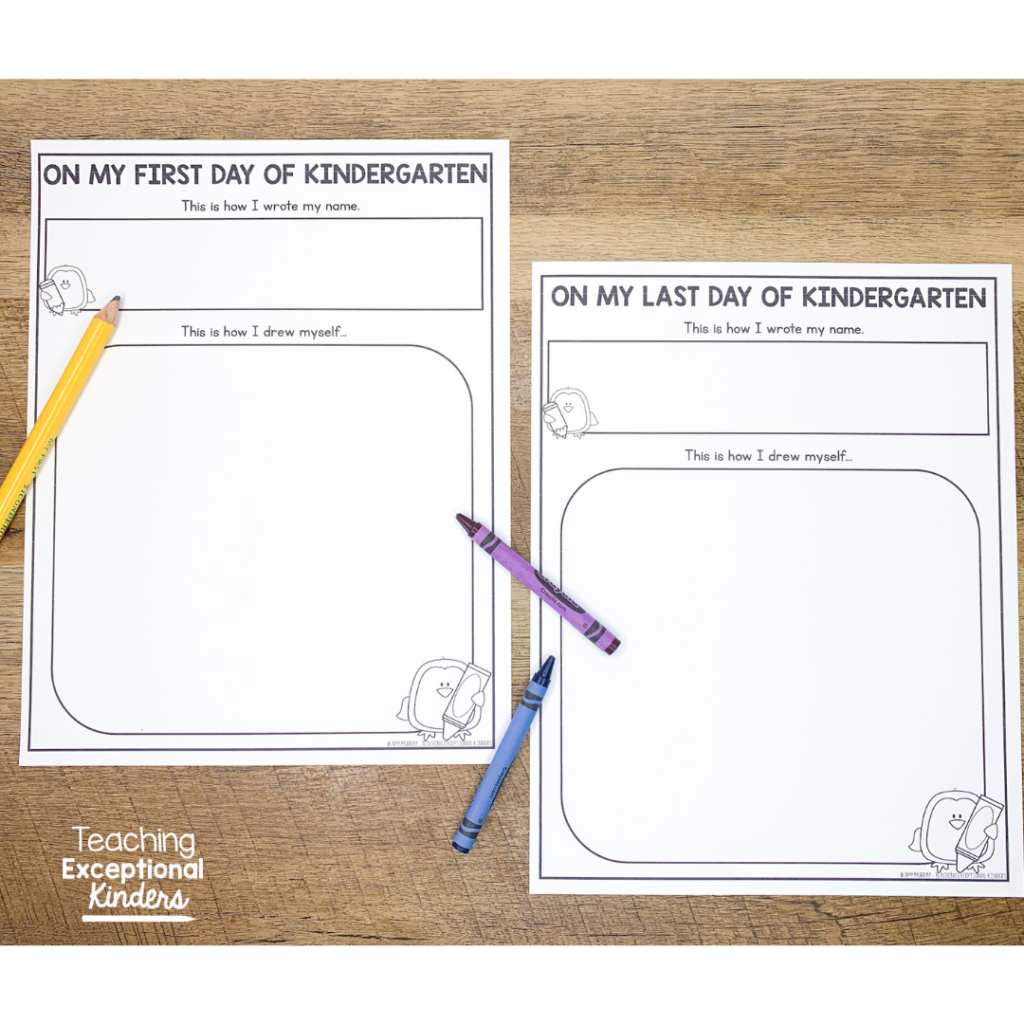
A great way to do this is with a First Day of Kindergarten keepsake like this one. Students can write their names and color a self-portrait. Be sure to tuck this away so you can compare it with the same tasks on a Last Day of Kindergarten keepsake. It’s so fun for students to see how much their skills have grown over the course of the year!
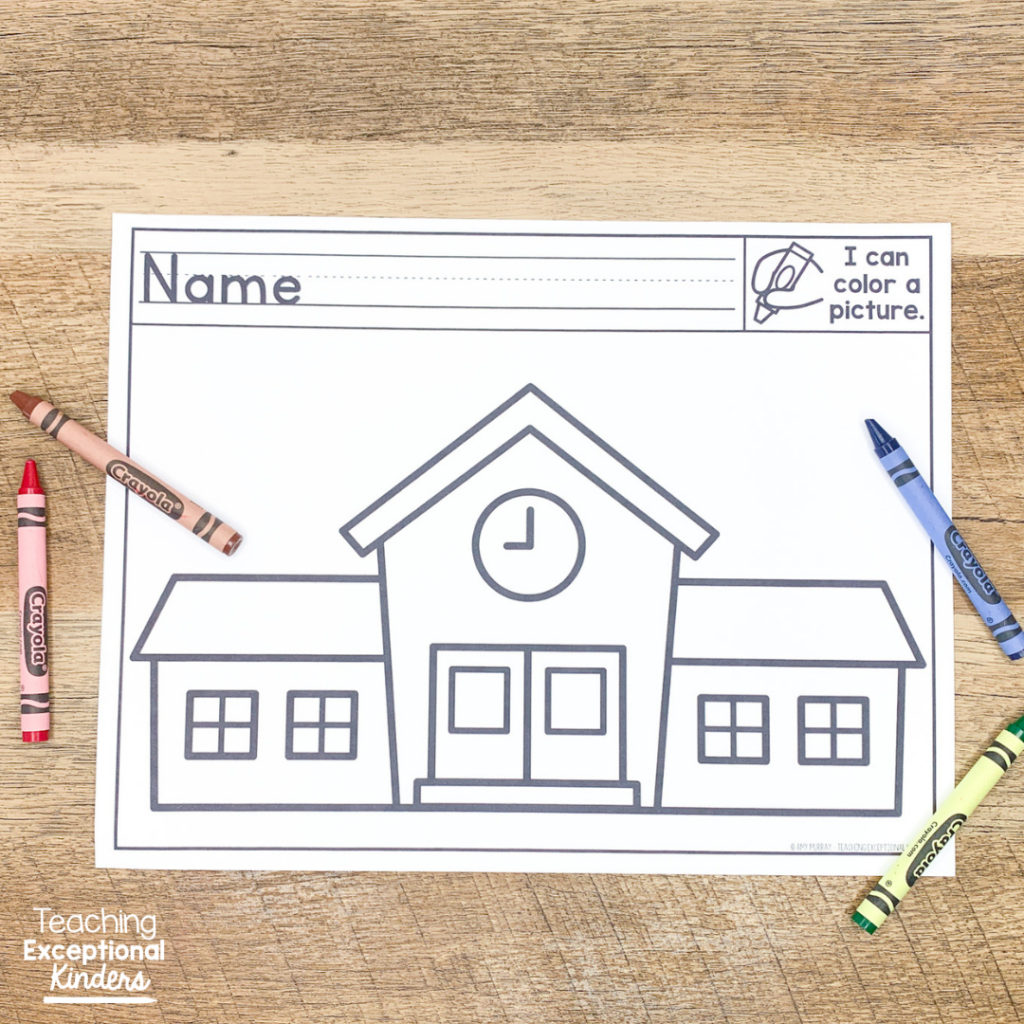
It’s also good for students to take something home from the first day of school to show their parents. This school coloring page is a great option! Students can practice keeping the crayon on the paper and using the right amount of pressure so the crayon doesn’t break.
Pencil and Crayons, Part Two
The second day of school is a good opportunity for students to practice using pencil and crayons in a slightly more structured way. This apple coloring page helps students practice following directions as they use their crayons. Students will listen for instructions on what color to use for the stem, the leaf, and the apple.
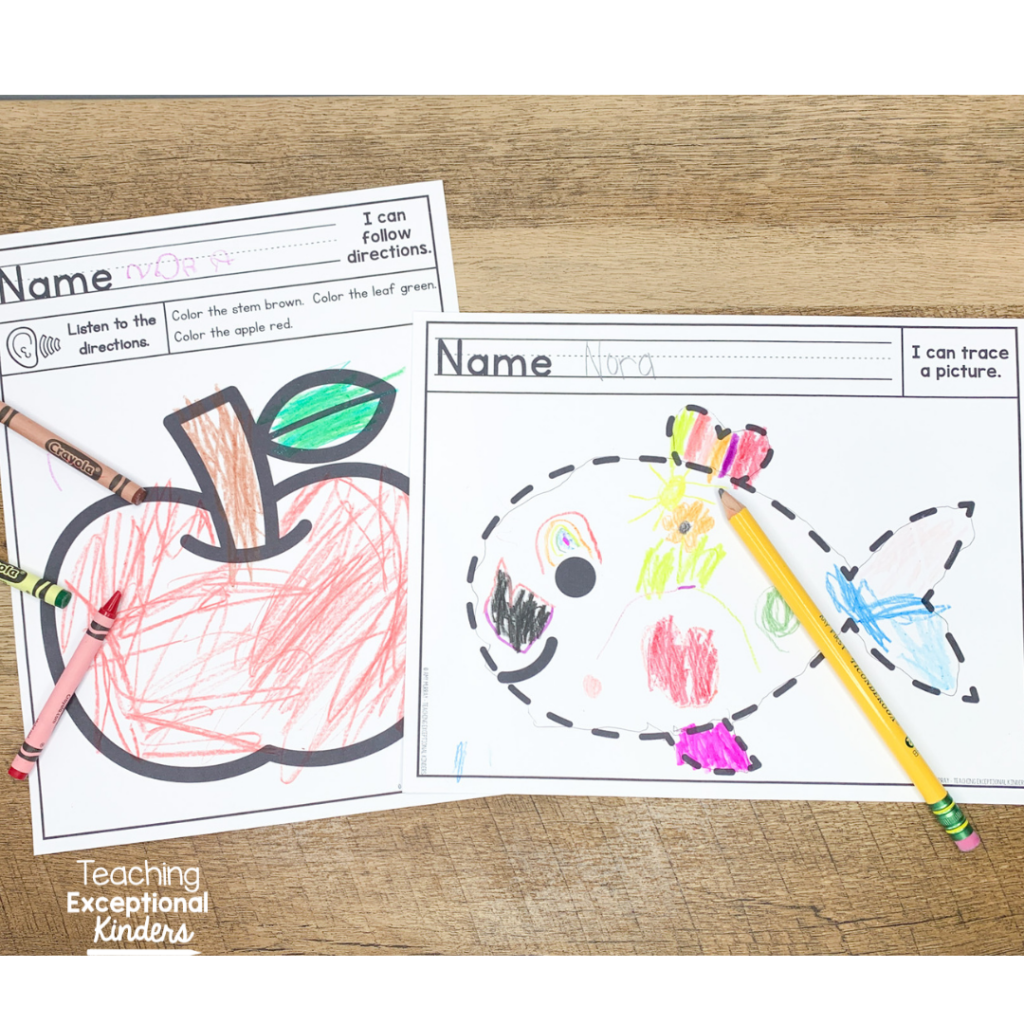
Since students use pencils to do a lot of tracing in kindergarten, it’s important to practice this skill early on! This fish page gives students a chance to practice tracing on a dotted line with pencil before coloring the inside with crayon. You can also hold on to the completed worksheet for scissor practice!
Markers
Once students have had plenty of opportunities to use pencils and crayons, it’s time to add another tool! Before giving students markers, review that they are only to be used on paper. Markers are never used on clothes, skin, or classroom furniture.
Lost and orphaned marker caps are common in a kindergarten classroom. Show students how they can put the cap on the end of the marker instead of letting it roll off the desk. Then show them how to correctly put the cap back on the marker. This can be a challenge for little hands, so remind them to keep pushing until they hear the click.
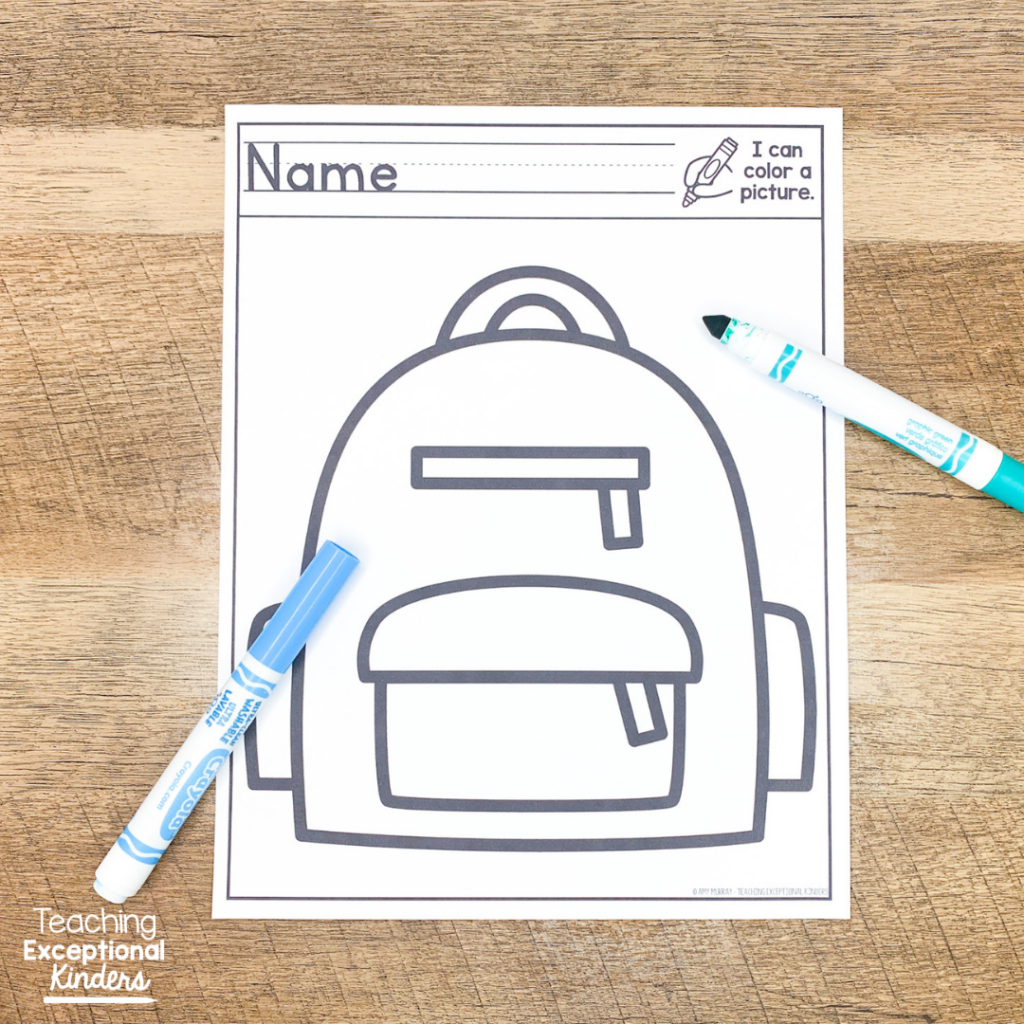
Marker procedure is a bit more involved, especially for students who have never used them before. I suggest using a simple coloring page like this one when it’s time to help students practice using markers.
Scissors
Teaching a classroom of five and six-year-olds how to use scissors can be one of the more stressful parts of being a kindergarten teacher. This is why scissors shouldn’t come out on the first day of school. In fact after a not-so-fun scissors incident, I never allowed students to keep scissors in their tool kits. I kept them away and pulled them out only when we needed to use them.
By waiting, you can learn a lot about students’ fine motor skills as they use pencils, crayons, and markers earlier in the week. This will give you a good idea of which students will need much more attention during the first scissor activity.
Safety is first and foremost when it comes to teaching students how to use scissors. Kindergartners need explicit reminders that scissors only cut paper and never hair, clothing, or skin. We always chanted, “scissors are for cutting PAPER and ONLY paper.” before we started cutting.
Give students a very simple cutting task to practice managing paper and scissors at the same time. Some students might need to practice cutting strips, while other students are ready to cut out objects. This would be a good time to pull out the heart-shaped cutting page to give students a chance to practice.
Glue
Once students can safely use scissors, they’re ready to cut and paste! I prefer introducing glue sticks before liquid glue since it’s easier for little hands to control. Plus, students have already been able to practice putting caps back on markers, so they’ll be ready to do the same with glue sticks. The main reminder that students need at this point is not to twist the glue stick too far, because that is always a big temptation!
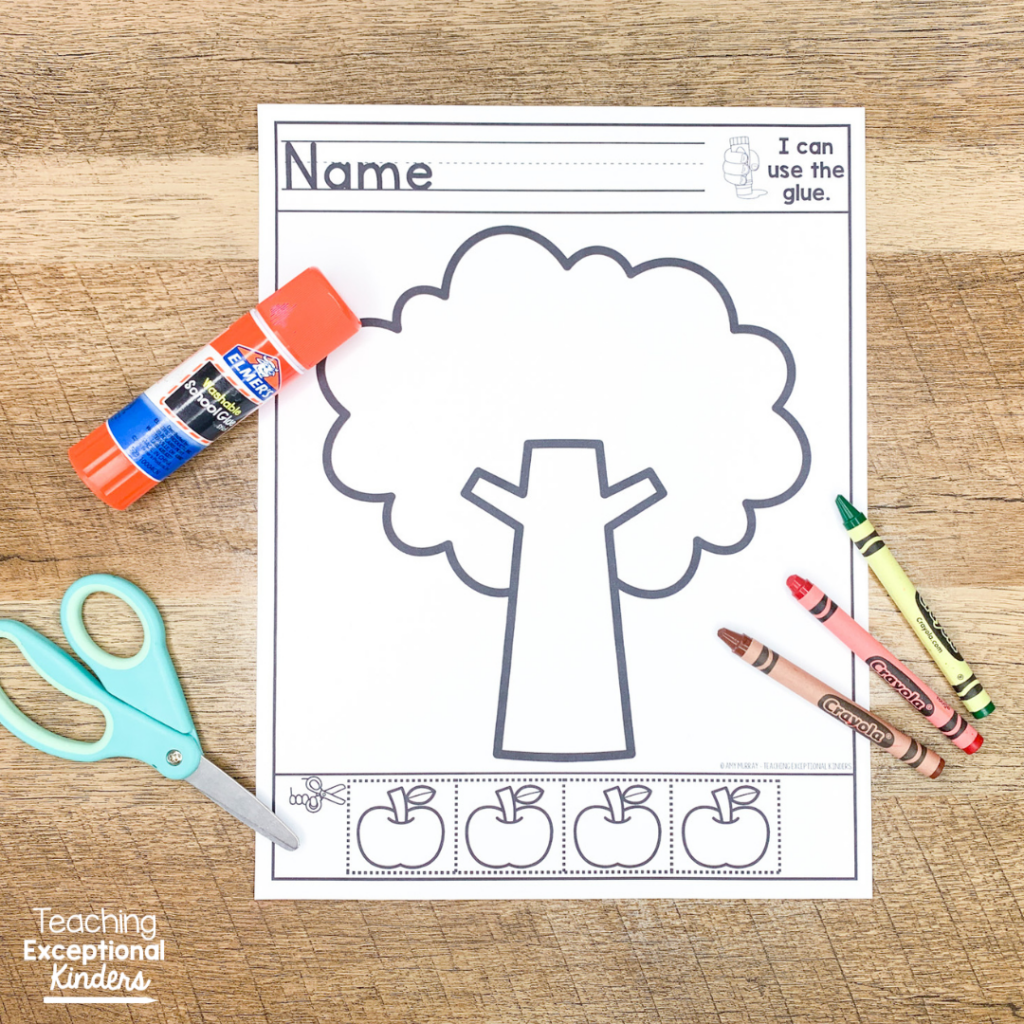
This apple-themed cut and paste activity is perfect for scissors and glue practice! The tree is large and there aren't specific places on the tree where students are supposed to glue. This way, students can focus more on the use of the glue stick than the placement of the apples.
How to Teach Kindergarteners to Use School Supplies Video
Would you like to get a closer look at how I teach kindergarten students to use school supplies in the first few days of school? Check out this video where I talk more about them.
How to Use School Supplies: Free Printable Activities
Would you like to use these simple and engaging activities to help your students learn how to use school supplies? I have created a free download with everything you need to help students get more comfortable with a variety of school tools. These printable activities are perfect for the first week of school! Just enter your email address below and I’ll deliver it straight to your inbox!
Save These Tips for the First Week of School
Be sure to add this pin to your favorite teaching board on Pinterest so that you’ll be ready for the first week of school!
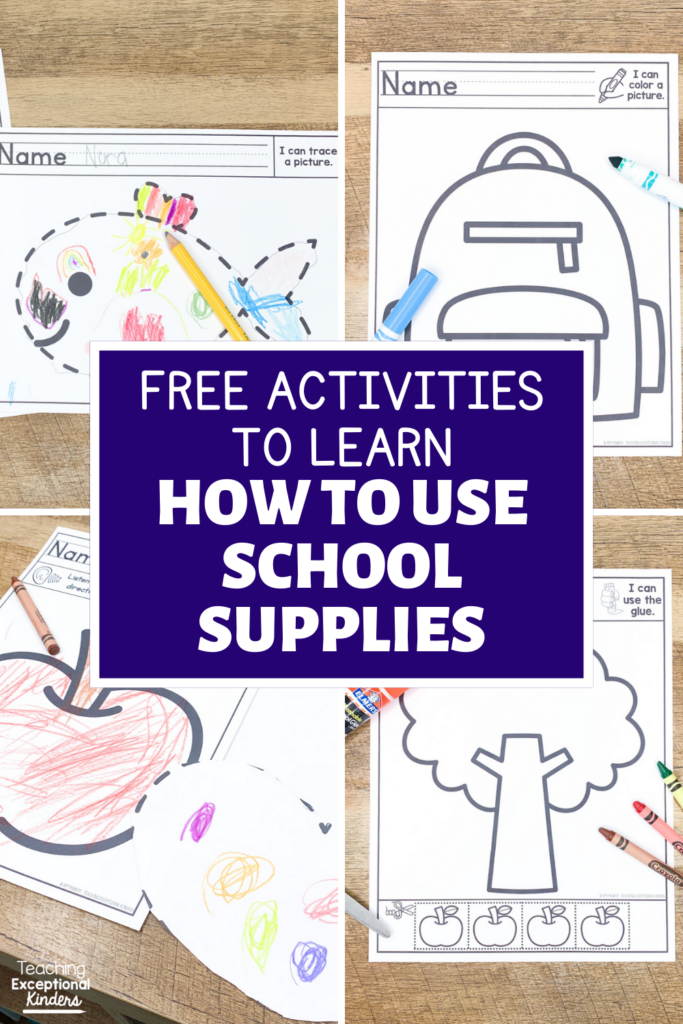
Amy
SITE DESIGN BY LAINE SUTHERLAND DESIGNS

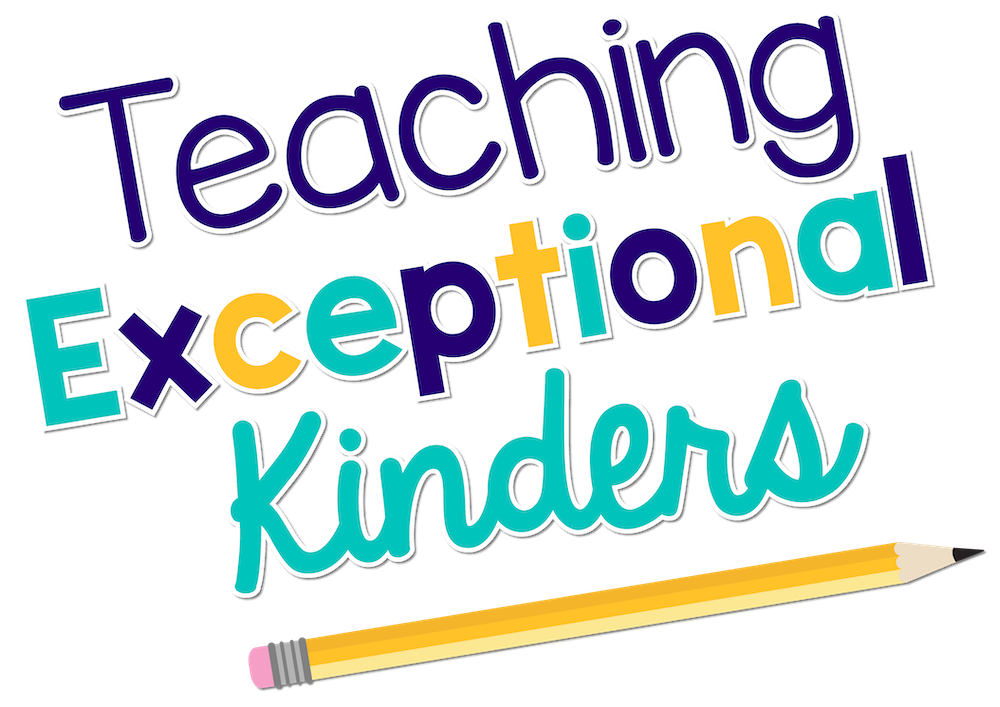
3 Comments
Love this resource!
Thanks!
I have been looking for things like this.